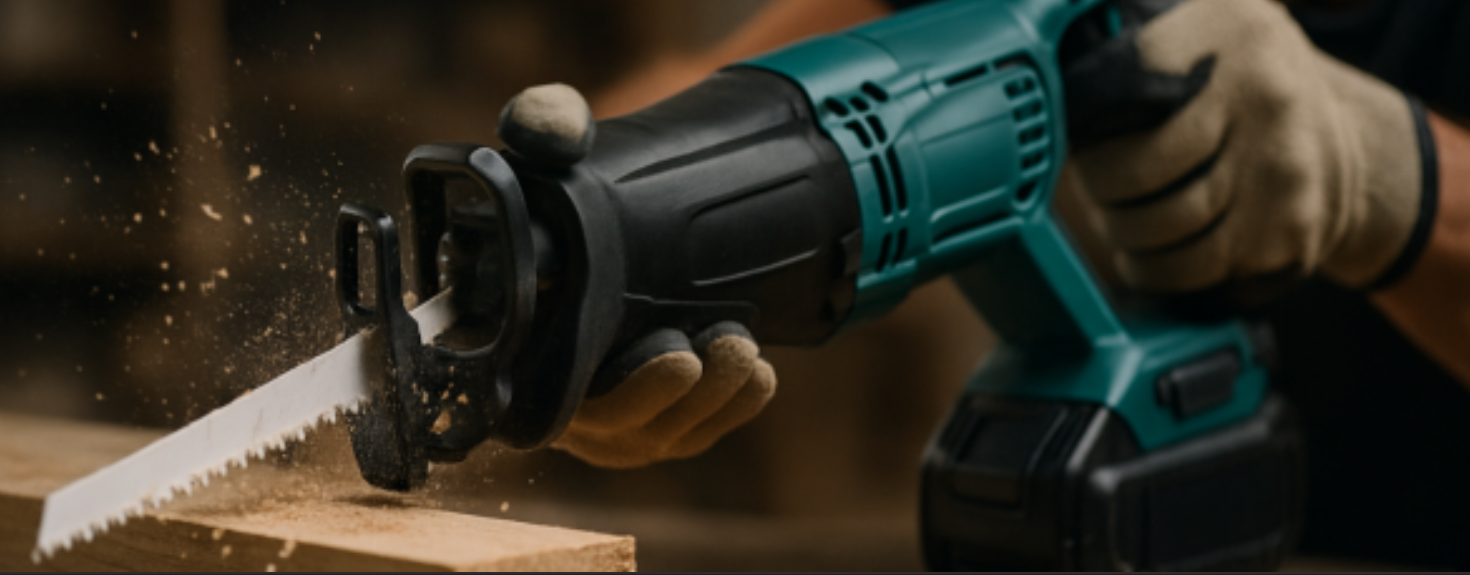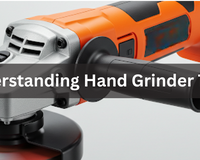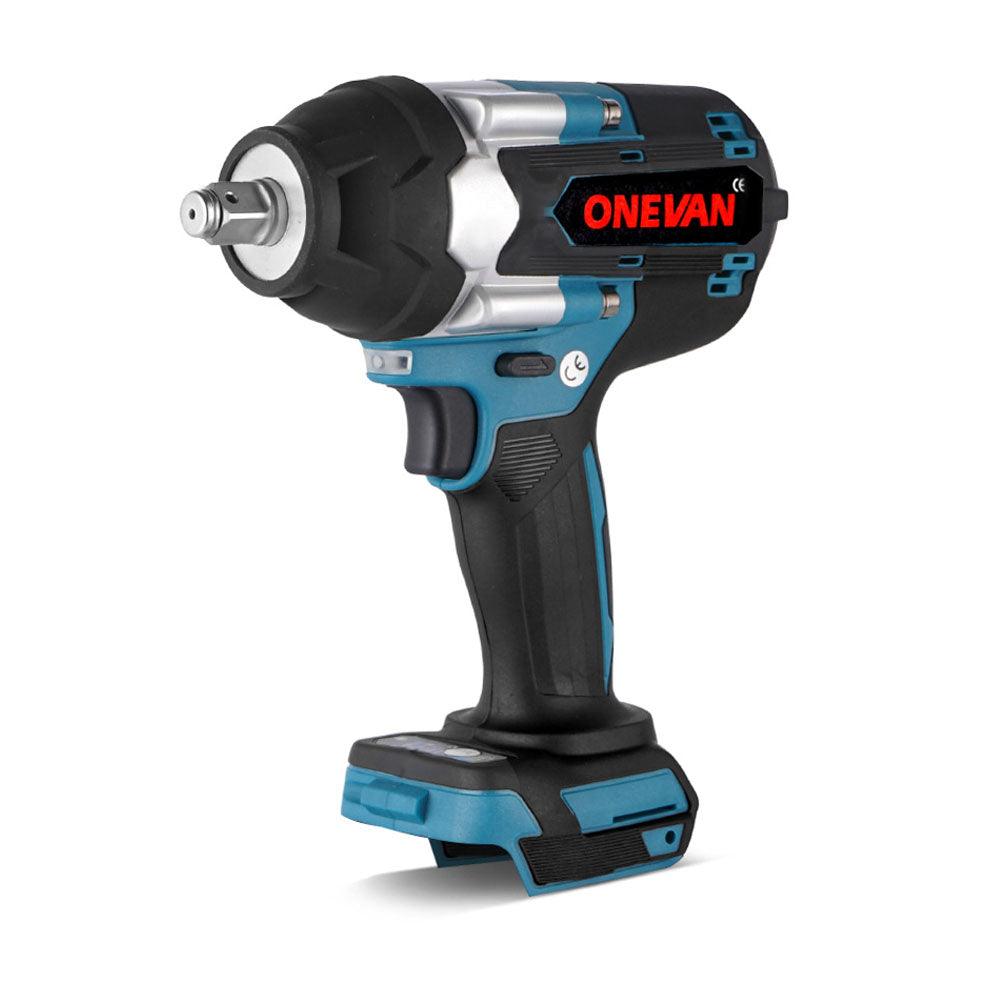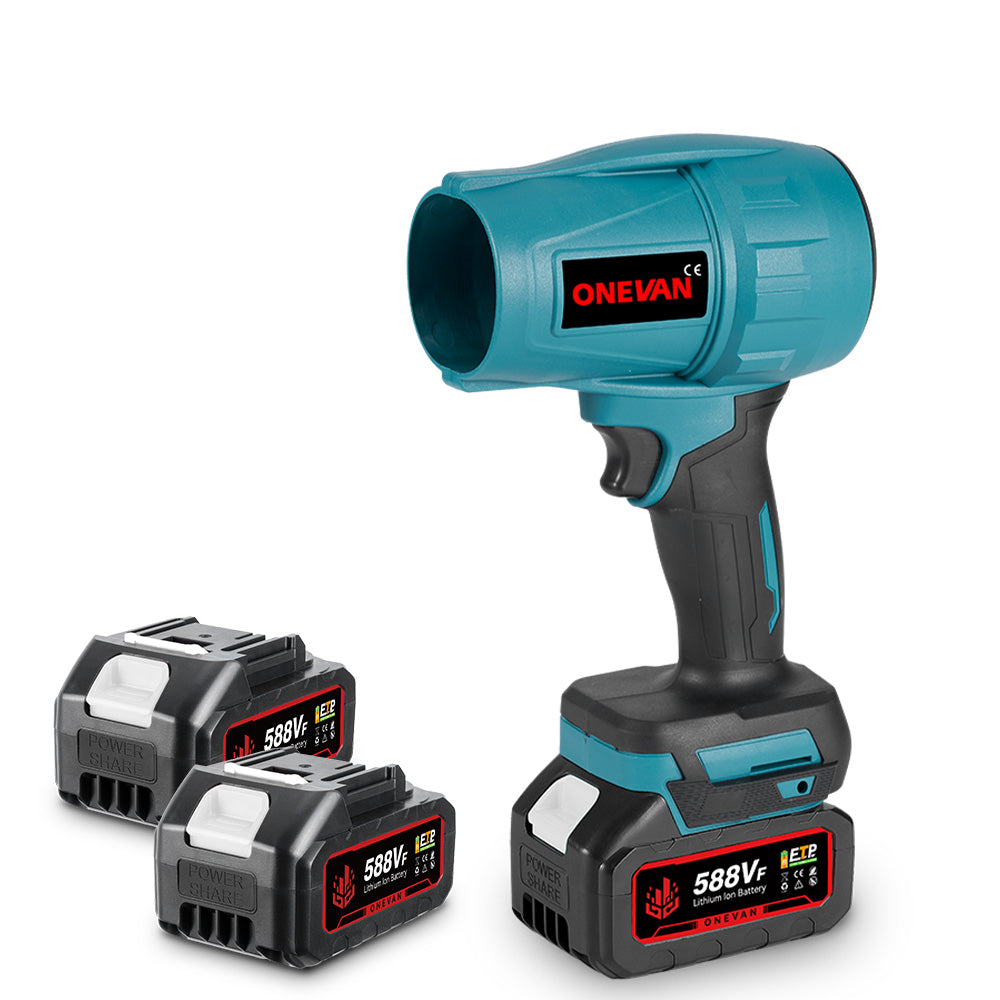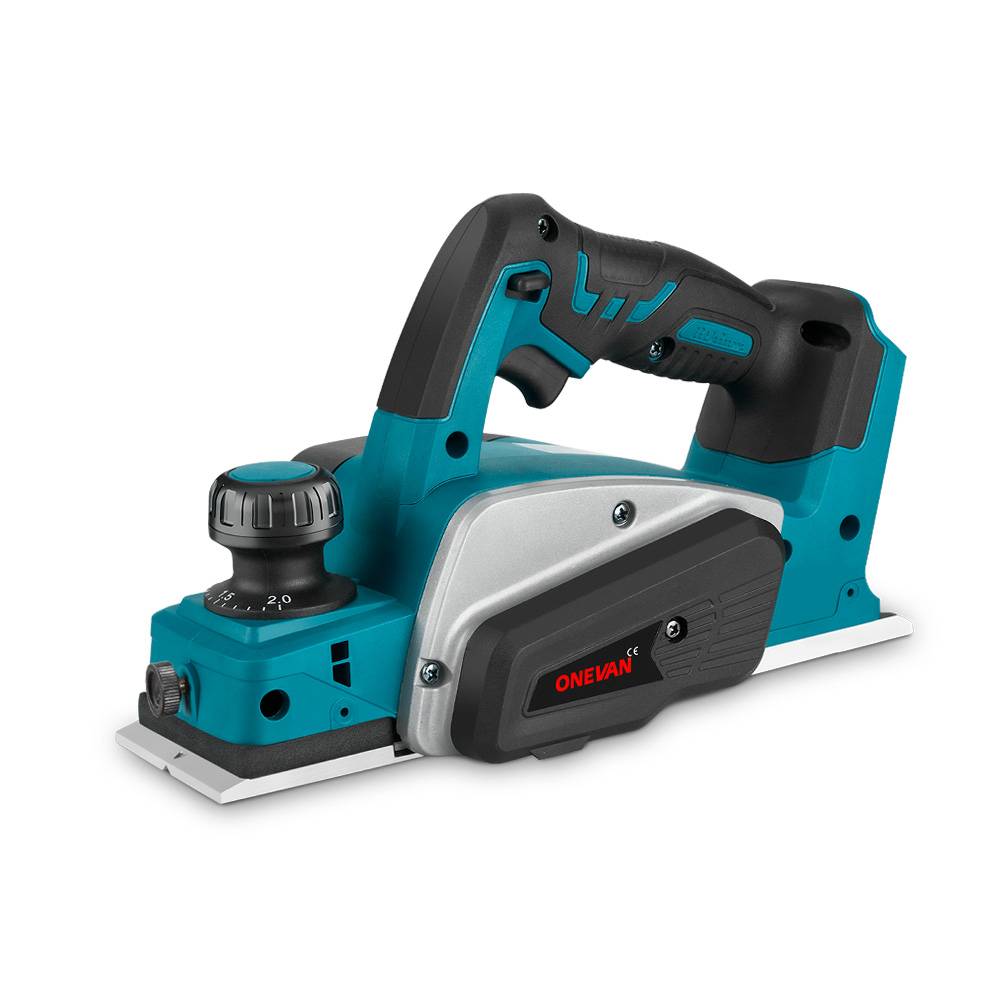As a DIYer or a professional carpenter, you may encounter a lot of wood stuff to handle. You want a neatness in your designs, but your cutting tools may not be doing justice to your efforts. Here comes a legendary tool: a reciprocating saw that will solve nearly all of your problems. You simply need to possess proper knowledge about blade selection, safety practices, and cutting techniques to effectively utilize this versatile tool. In this read, you will come to know exactly how to use a reciprocating saw for wood cutting. And why the ONEVAN reciprocating saw is the best choice. So stay tuned and read till the end.
1. What is a Reciprocating Saw?
Definition and Components
A reciprocating saw is one of the most reliable cutting instruments, capable of handling a wide range of cutting tasks both at home and in the workplace. It can easily reach awkward and tight spaces to make precise cuts. This tool is used by many famous DIYers and carpenters worldwide and has become their go-to cutting tool. It can easily cut wood, metal, PVC, plastic, drywall, masonry, glass, composites, and luminates. Here are some of its components you need to know before using.
Motor
The motor is the powerhouse for the reciprocating saw, driving the blade to move and make cuts.
Variable Speed Trigger
By using this speed trigger, you can adjust the blade's speed to your preference. For more delicate cuts, adjust the blade speed to a lower setting. For tougher materials, use a firmer grip combined with an appropriate speed setting for effective cutting.
Blade Clamp
It is used to adjust the blade at a fixed place. This is a crucial step for your safety and achieving good cuts. Now, there are many reciprocating saws available on the market that come with a free clamp. This can switch your blades within a few seconds from wood cutting to metal or any other material. It's a good choice if you have to cut different types of materials while working.
Shoe
The shoe of a reciprocating saw is a flat metal piece at the front that provides stability and helps control the depth of the cut during operation. It keeps the blade in control while making precise cuts.
Blade
The blade plays a crucial role in a reciprocating saw, as it performs the actual cutting. There are different types of blades based on TPI (Tooth Per Inch), which determines cutting speed and smoothness. Lower TPI is ideal for faster cuts, while higher TPI provides a smoother finish on thinner materials. For wood cutting, you need a blade with low TPI, while for metals, you need a High TPI blade. So it varies for different types of materials being cut.
How Does a Reciprocating Saw Work?
A reciprocating saw uses the power of reciprocation, in which the blade moves back and forth to make cuts. When you turn ON the motor in a reciprocating saw, it moves the piston for blade movement. Then the blade moves with the push and pull mechanism to cut the required material. You can control the speed of blade movement with the help of a variable speed trigger. For heavy wood cutting, you need a faster speed, and for small tree branches, you need to press them gently. Due to its portable size, you can use a reciprocating saw very easily for your cutting projects.
2. Can a Reciprocating Saw Cut Wood?
Obviously, the reciprocating saw can easily cut different types of wood. Whether it's a softwood for your DIY project or a hardwood for your furniture, a reciprocating saw is the best choice. All you need is the right blade and the necessary precautions to keep in mind while cutting.
Types of Wood Suitable for Cutting
Soft Wood
Softwoods, such as pine, fir, or cedar, are very light and delicate. These wood types can be cut with the help of a reciprocating saw, provided the right blade and approach are used. As we know, soft woods are prone to more damage, so you must use a medium TPI blade for this purpose. And the speed of the blade should be adjusted to a minimum for delicate cuts.
Hard Wood
Hardwoods, such as oak, maple, and walnut, are denser and require more effort to work with compared to softwoods. For this type of wood, you need a carbide or bi-metal blade that can easily pass through the material. While cuts using a reciprocating saw may not achieve the fine finish associated with a table saw, it is effective for rough carpentry tasks where precision is less critical.
Ply Wood
Plywood is a medium-density wood type primarily used in engineering and construction applications. When cutting plywood, some may produce fine dust, while others may create larger wood shavings. Therefore, ensure that you wear appropriate safety gear to protect against dust and debris. Mostly, this wood type is used for DIY and on construction sites. With a high TPI blade, you can easily cut plywood into various shapes or designs according to your project needs.
Effectiveness in Cutting Wood
One of the main advantages of using a reciprocating saw for wood cutting is its speed; it is also celebrated for its versatility and ability to tackle challenging cuts in tight spaces. No other cutting instrument can beat the speed of a reciprocating saw when you have less time and more work to do.
As the reciprocating saw is very portable and has a fine body, you can use it for awkward wood cuts easily. Moreover, for wood demolition work, a reciprocating saw is an excellent choice because it can handle a variety of wood types, but care must be taken with dense hardwoods or materials containing nails.
3. Advantages of Using a Reciprocating Saw for Wood Cutting
Versatility
When it comes to the versatility of power cutting tools, the reciprocating saw is one of the most versatile options. Because of its easily replaceable blades and the size to reach tight spaces, you can perform a wide array of cutting tasks with this instrument, including demolition, pruning, and detailed woodwork cuts in both indoor and outdoor settings. The ONEVAN reciprocating saw is designed to last for years without any technical faults.
Portability
If you have to handle a task in outdoor places and the biggest hurdle you feel about the cutting instrument is its size for carrying, but you don’t need to worry about it. Because the the cordless reciprocating saw is very portable and easy to carry, you can also use it for extended periods without worrying about battery life.
Ability to cut in tight spaces
While wood cutting, you may encounter some branches stuck in tight junctions and corners. There is no way to cut them without a long and fast cutting instrument. A reciprocating saw will solve your problem within minutes. Due to its long blades and light weight, you can easily cut all the tree branches in tight spaces.
4. Applications of Reciprocating Saws in Wood Cutting
Demolition and Renovation Projects
While renovating your home, there may be so many old, creepy wood pieces that you really want to transform. But the main problem you face while cutting that old wood may be that it has rusted nails, and so many other worn-out materials. However, thanks to the amazing reciprocating saw, the cutting work can be done so easily within just a few moments. You just need the right blades and hands-on experience to use it.
Pruning and Tree Cutting
On a very fine day, you may see some unnecessary tree branches hanging in your yard, and you have an idea to prune them. But wait, you need muscle power for it. Now, with the reciprocating saw, you need less muscle power because its blades are so sharp and optimized that within a short time, you can handle a day's work. So next time, don't waste your time and efforts on unnecessary and expensive equipment.
Crafting and Woodworking
In a workshop, carpenters or DIY enthusiasts have a wide range of materials to craft with. They may encounter some table edges to even out or to build some furniture. So reciprocating is their best tool to use because it is very easy to handle. DIY enthusiasts can create intricate and delicate works with the help of a reciprocating saw. All they need is a good handling technique.
5. Choosing the Right Blade for Wood Cutting
Selecting the right blade for a reciprocating saw is crucial for completing your cutting tasks efficiently. Let's suppose your reciprocating saw is like a car engine that provides power to the car, and the blades are like tires. If tires are not specific to your car, no matter how good your engine is, you cannot move it. So, select the appropriate blade type based on the material you are cutting and the specific project requirements to ensure safe and effective results.
Types of Blades Available
There are various types of blades available on the market for a reciprocating saw, but you must select the one that is suitable for your specific type of wood.. When selecting your blade, consider two key factors: blade TPI and material length.
Blade TPI for wood:
Low TPI blades, ranging from 5 to 10, are engineered for fast cutting and are well-suited for thick hardwoods with large dimensions, focusing on material removal rather than fine precision. While the High TPI of about 10-14 is smooth and has a slightly finer surface, it is suitable for thinner wood types, such as plywood.
Material Type:
Most wood-cutting blades are made of high-carbon steel, a relatively affordable and very flexible material. And if you have to encounter wood embedded with nails, then a bi-metal blade will be the best possible option.
Length of the blade:
Based on blade length, Blades are generally available in various lengths, typically ranging from 4 to 12 inches. Small blades are typically available in sizes ranging from 4 to 6 inches in diameter. These are easier to control and handle small cutting tasks effectively. While those with a large length, mostly 10-12 inches, are good for the hidden spaces where you cannot reach easily, the long blade will make your life easier.
Blade Selection for Specific Projects
Choosing the right blade for your objective will not only save time but also your efforts and money. Here are some specific tasks and the corresponding blade types.
- Demolition or Renovation: A bi-metal 9-inch blade is ideal
- Tree Pruning: A 10-12 inch blade with a sharp and coarse blade will be good.
- Crafting or wood working: A short blade with high TPI will give smooth cuts.
6. Safety Considerations When Using a Reciprocating Saw
Personal Protective Equipment (PPE)
Before working with any power tool, remember that your personal safety is the most important consideration. There are so many incidents that have happened when people have used the recip saw without the PPE, and they got severely injured. Before starting work, ensure you use protective gloves. To prevent dust and debris from entering your eyes, wear safety goggles, and consider using a dust mask and protective gloves to ensure overall safety while operating the tool. As you are aware of the high sound production from power tools, be prepared by wearing ear protection. This way, you will not only save yourself but your environment as well.
Safe Operating Procedures
Here is a step-by-step guide for safely using a reciprocating saw to cut wood.
- Always select the correct blade and avoid forcing a wrong blade into the clamp.
- Then, secure your wood piece at the right position firmly to avoid any accidents later on.
- Now adjust the base plate, as it will help to secure the place and cut smoothly.
- Both hands should be on the saw, with one at the handle and the other slightly forward.
- Maintain steady control and apply consistent pressure as needed to cut the material.
Common Hazards of Using a Reciprocating Saw and How to Avoid Them
Discussion on potential risks associated with using reciprocating saws and safety measures. Power tools are amazing, but they can also create hazards that you need to be aware of and avoid. Here are some potential hazards associated with power tools and how to prevent them.
Kickbacks
Sometmes the blade of the saw gets stuck in the wooden piece. And you apply a force to get it out, and suddenly the saw kicks back with pressure. This kickback can cause loss of control and injury. To avoid this, always keep your saw firmly on the base plate and avoid twisting the blade while cutting; let the blade do its work.
Flying Debris
Wood cutting, especially during demolition and renovation, generates a substantial amount of dust and debris that contains wood particles, broken nails, and other hazardous materials. If you do cutting without any safety goggles and a mask, you will face a severe injury. Ensure you wear all the necessary safety equipment before undertaking this task.
Blade Breaks
If the blade you are using is bent or overheated, it can become misaligned. The primary reason is the incorrect use of a blade for a specific material type. To avoid this risk, always use the correct blade and apply only the necessary pressure when cutting. And if the blade is bent, change it as soon as possible.
Electric shocks
If you are using a corded reciprocating saw, ensure it is kept dry before use. If it's wet, it can lead to an electric shock. So always inspect before use, and if possible, use a cordless reciprocating saw.
7. Conclusion
A reciprocating saw is trusted by many professionals worldwide for wood cutting. You can use a reciprocating saw for carpentry, diy projects, demolition, and any other place where you have to work on wood. You simply need to select a suitable blade based on your specific wood type, the required TPI, and the proper length to achieve optimal cutting results. And when it comes to the most trusted brand for reciprocating saws, ONEVAN’s reciprocating saw is one you can consider. They are durable, precise, and convenient at the same time.
8. FAQs
Can a reciprocating saw cut through nails in wood?
Yes, using the right blade in the reciprocating saw, you can cut through nails.
How do I know when to change the blade on my reciprocating saw?
If your blade feels dull and requires excessive force to cut, it is essential to change it immediately. Also, assess if the blade type is appropriate for the material at hand.
Is it safe to use a reciprocating saw for cutting large pieces of wood?
Yes, you can, but always ensure that your material is securely clamped in a fixed position and held with both hands while using the saw.
Can I use a reciprocating saw for metal cutting as well?
Yes, you can use a reciprocating saw for metal cutting as long as you switch to an appropriate blade designed for metal. Ensure that you select a blade suitable for the specific thickness and type of metal you’re working with.
How does a reciprocating saw compare to a circular saw for cutting wood?
A circular is suitable for straight and cleaner cuts that are important in precision work. But a reciprocating saw is a versatile instrument.

